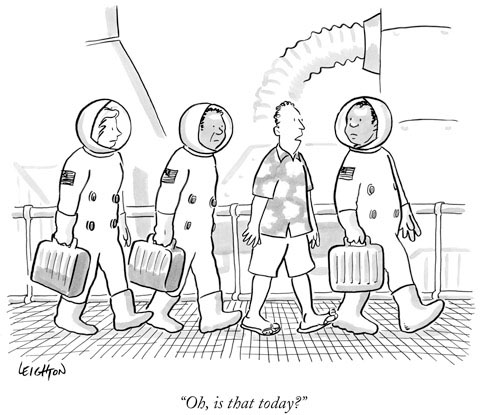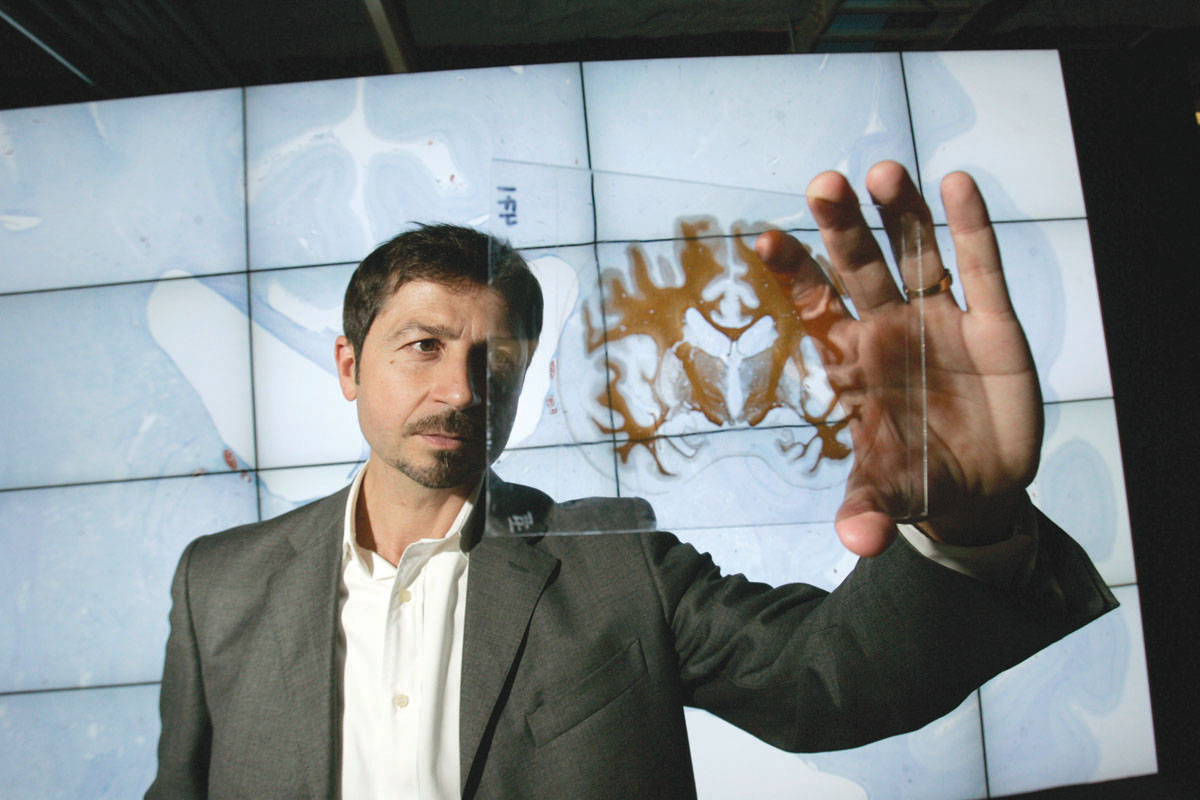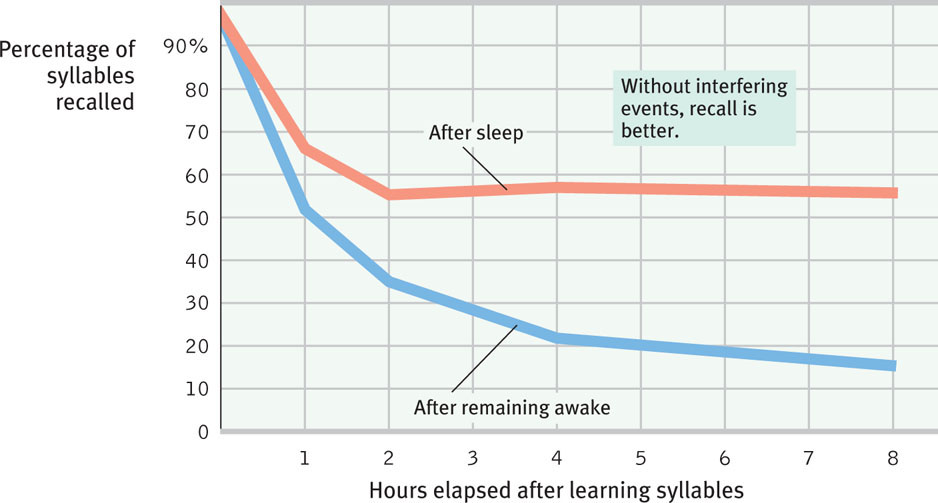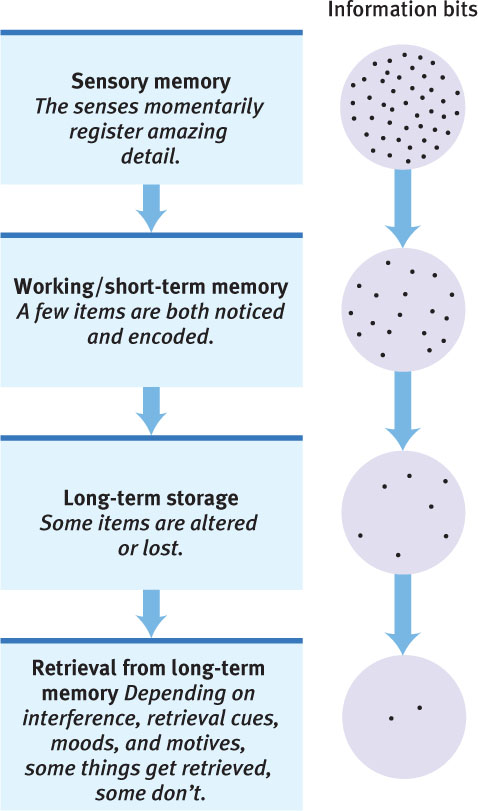Forgetting
7-16 Why do we forget?


 If a memory-enhancing pill becomes available, it had better not be too effective. To discard the clutter of useless information—outfits worn last month, e-mail addresses now out of date, restaurant orders already cooked and served—is surely a blessing. Remember meeting the Russian memory whiz S earlier in this chapter? His junk heap of memories dominated his conscious mind. He had difficulty thinking abstractly—generalizing, organizing, evaluating. So does “A. J.,” who is Jill Price in real life. She reports that her supermemory interferes with her life, with one memory cuing another (Parker et al., 2006): “It’s like a running movie that never stops.”
If a memory-enhancing pill becomes available, it had better not be too effective. To discard the clutter of useless information—outfits worn last month, e-mail addresses now out of date, restaurant orders already cooked and served—is surely a blessing. Remember meeting the Russian memory whiz S earlier in this chapter? His junk heap of memories dominated his conscious mind. He had difficulty thinking abstractly—generalizing, organizing, evaluating. So does “A. J.,” who is Jill Price in real life. She reports that her supermemory interferes with her life, with one memory cuing another (Parker et al., 2006): “It’s like a running movie that never stops.”
More often, however, our quirky memories fail us when we least expect it. My own memory can easily call up such episodes as that wonderful first kiss with the woman I love, or trivial facts like the air mileage from London to Detroit. Then it abandons me when I discover that I have failed to encode, store, or retrieve a student’s name or the spot where I left my sunglasses.
Forgetting and the Two-Track Mind

For some, memory loss is severe and permanent, as it was for Henry Molaison, whom you met earlier in this chapter. Molaison could recall his past, but he could not form new conscious memories. Neurologist Oliver Sacks (1985, pp. 26–27) described another patient, Jimmie, who was stuck in 1945, the year of his brain injury. When Jimmie gave his age as 19, Sacks set a mirror before him: “Look in the mirror and tell me what you see. Is that a 19-year-old looking out from the mirror?”
Jimmie turned pale, gripped the chair, cursed, then became frantic: “What’s going on? What’s happened to me? Is this a nightmare? Am I crazy? Is this a joke?” When his attention was directed to some children playing baseball, his panic ended, the dreadful mirror forgotten.
Sacks showed Jimmie a photo from National Geographic. “What is this?” he asked.
“It’s the Moon,” Jimmie replied.
“No, it’s not,” Sacks answered. “It’s a picture of the Earth taken from the Moon.”
“Doc, you’re kidding? Someone would’ve had to get a camera up there!”
“Naturally.”
“Hell! You’re joking—how the hell would you do that?” Jimmie’s wonder was that of a bright young man from the 1940s, amazed by his travel back to the future.

Careful testing of these unique people reveals something even stranger. Although they cannot recall new facts or anything they have done recently, they can learn new skills and can be classically conditioned. Shown hard-to-find figures in pictures (in the Where’s Waldo? series), they can quickly spot them again later. They can find their way to the bathroom, though without being able to tell you where it is. They can master mirror-image writing, jigsaw puzzles, and even complicated job skills (Schacter, 1992, 1996; Xu & Corkin, 2001). However, they do all these things with no awareness of having learned them. They suffer amnesia.
Molaison and Jimmie lost their ability to form new explicit memories, but their automatic processing ability remained intact. They could learn how to do something, but they had no conscious recall of learning their new skill. Such sad cases confirm that we have two distinct memory systems, controlled by different parts of the brain.
For most of us, forgetting is a less drastic process. Let’s consider some of the reasons we forget.
Encoding Failure
Much of what we sense we never notice, and what we fail to encode, we will never remember (FIGURE 7.13). Age can affect encoding ability. When young adults encode new information, areas of their brain jump into action. In older adults, these areas are slower to respond. Learning and retaining a new neighbor’s name or mastering a new computer becomes more of a challenge. This encoding lag helps explain age-related memory decline (Grady et al., 1995).

But no matter how young we are, we pay conscious attention to only a limited portion of the vast number of sights and sounds bombarding us. When texting during class, students may fail to encode lecture details that their more attentive classmates are encoding. Without effort, many might-have-been memories never form.
Storage Decay
Even after encoding something well, we may later forget it. That master of nonsense-syllable learning, Hermann Ebbinghaus, also studied how long memories last. After learning his lists of nonsense syllables, such as YOX and JIH, he measured how much he remembered at various times, from 20 minutes to 30 days later. The result was his famous forgetting curve: The course of forgetting is rapid at first, then levels off with time (Wixted & Ebbesen, 1991).
People studying Spanish as a foreign language showed this forgetting curve for Spanish vocabulary (Bahrick, 1984). Compared with others who had just completed a high school or college Spanish course, people 3 years out of school had forgotten much of what they had learned. However, what they remembered then, they still remembered 25 and more years later. Their forgetting had leveled off (FIGURE 7.14).

One explanation for these forgetting curves is a gradual fading of the physical memory trace, which is a physical change in the brain as a memory forms. Researchers are getting closer to solving the mystery of the physical storage and decay of memories. But memories fade for many reasons, including other learning that disrupts our retrieval.
Retrieval Failure
We can compare forgotten events to books you can’t find in your local library. Some aren’t available because they were never acquired (not encoded). Others have been discarded (stored memories decay).
But there is a third possibility. The book—or memory—may be out of reach because we don’t have enough information to access it. For example, what causes frustrating “tip-of-the-tongue” forgetting? (Deaf people fluent in sign language may experience a parallel “tip-of-the-fingers” feeling [Thompson et al., 2005].) These are retrieval problems (FIGURE 7.15). Given retrieval cues (“It begins with an M”), you may easily retrieve the memory. Older adults more frequently have these frustrating tip-of-the-tongue experiences (Abrams, 2008).

Here’s a question to test your memory. Do you recall the second sentence I asked you to remember—about the swimmer? If not, does the word shark serve as a retrieval cue? Experiments show that shark (the image you probably visualized) more readily retrieves the image you stored than does the sentence’s actual word, fish (Anderson et al., 1976). (The sentence was “The fish attacked the swimmer.”)
Retrieval problems occasionally stem from inteference or, perhaps, from motivated forgetting.
Interference
As you collect more and more information, your mental attic never fills, but it gets cluttered. Sometimes the clutter interferes, as new and old learning bump into each other and compete for your attention. Proactive (forward-looking) interference occurs when an older memory makes it more difficult to remember new information. Your well-rehearsed Facebook password may interfere with your retrieval of your new bank log-in.
Retroactive (backward-acting) interference occurs when new learning disrupts your memory of older information. If someone sings new words to the tune of an old song, you may have trouble remembering the original. It is rather like a second stone being tossed in a pond, disrupting the waves rippling out from the first.
New learning in the hour before we fall asleep is protected from retroactive interference because the chances of disruption are few (Diekelmann & Born, 2010; Nesca & Koulack, 1994). Researchers first discovered this in a now-classic experiment (Jenkins & Dallenbach, 1924). Day after day, two people each learned some nonsense syllables. When they tried to recall them after a night’s sleep, they could retrieve more than half the items (FIGURE 7.16). But when they learned the material and then stayed awake and involved with other activities, they forgot more, and sooner.

The hour before sleep is a good time to commit information to memory (Scullin & McDaniel, 2010), but not the seconds just before sleep. Information presented as the window of consciousness slams shut doesn’t have a chance to be encoded (Wyatt & Bootzin, 1994). And if you’re considering learning while sleeping, forget it. We have little memory for information played aloud in the room during sleep, although our ears do register it (Wood et al., 1992).
Old and new information do not always compete, of course. Knowing Latin may actually help us to learn French. This effect is called positive transfer.
Motivated Forgetting
To remember our past is often to revise it. Years ago, the huge cookie jar in our kitchen was jammed with freshly baked chocolate chip cookies. Still more were cooling across racks on the counter. Twenty-four hours later, not a crumb was left. Who had taken them? During that time, my wife, three children, and I were the only people in the house. So while memories were still fresh, I conducted a little memory test. Andy admitted wolfing down as many as 20. Peter thought he had eaten 15. Laura guessed she had stuffed her then-6-year-old body with 15 cookies. My wife, Carol, recalled eating 6, and I remembered consuming 15 and taking 18 more to the office. We sheepishly accepted responsibility for 89 cookies. Still, we had not come close; there had been 160.
Why were our estimates so far off? FIGURE 7.17 reminds us that as we process information, we sift, change, or lose much of it. So was our cookie confusion an encoding problem? (Did we just not notice what we had eaten?) Was it a storage problem? (Might our memories of cookies, like Ebbinghaus’ memory of nonsense syllables, have melted away almost as fast as the cookies themselves?) Or was the information still intact but not retrievable because it would be embarrassing to remember?1


Sigmund Freud might have argued that our memory systems self-censored this information. He proposed that we repress painful or unacceptable memories to protect our self-concept and to minimize anxiety. But the repressed memory lingers, he believed, and can be retrieved by some later cue or during therapy. Repression was central to Freud’s psychoanalytic theory (more on that in Chapter 11) and was a popular idea in mid-twentieth-century psychology and beyond. In one study, 9 in 10 university students agreed that “memories for painful experiences are sometimes pushed into unconsciousness” (Brown et al., 1996). Some therapists assume it. Today, however, increasing numbers of memory researchers think repression rarely, if ever, occurs. People’s deliberate attempts to forget often succeed when the material is neutral, but not when it is emotional (Payne & Corrigan, 2007). Thus, we may have intrusive memories of the very traumas we would most like to forget. 
RETRIEVE + REMEMBER
Question 7.15
 What are three ways we forget, and how does each of these happen?
What are three ways we forget, and how does each of these happen?
(1) Encoding failure: Unattended information never entered our memory system. (2) Storage decay: Information fades from our memory. (3) Retrieval failure: We cannot access stored information accurately, sometimes due to interference or motivated forgetting.